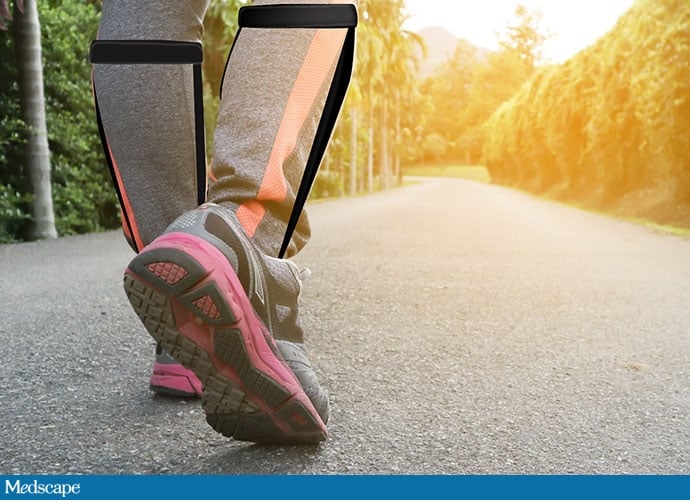New Invention Speeds Up Walking Pace

|
|
When engineers timed people wearing their newly designed torque-controlled ankle supports, they were excited to see a 15% increase in walking speed.
But those were just baby steps compared with what they would find next.
Engineers at Stanford University took their prototype and tried it on a larger group of people in a study funded by the US National Science Foundation. Systems similar to theirs are designed to move the entire leg, but their brace attaches around the shin and into a running shoe to help move the ankles more efficiently. And when they tested it — this time on 10 young, healthy adults — participants’ walking speed improved 42% over their usual pace.
“Seeing that kind of number is very exciting,” muses Seungmoon Song, PhD. “And it makes us feel like we’re onto something.”
Cyborg Fast
In science fiction, a cyborg is a person helped by a mechanical or electronic device. And what they are learning now, Song says, is that ankle push off is a very important part of walking. But it remains a mystery just how much energy is used in ankle push off, compared with leg swing, to advance the whole body.
Historically, Leonardo da Vinci investigated the role of the ankle in human motion. He combined his interest in anatomy with his artistic ability to draw the structure of the foot and ankle in exquisite detail, which has helped shape the science to this day.
By 2014, the lab at Stanford had already developed its first ankle-fitting prototype that helped set the course for the design of their latest version. Engineer Steven Collins, PhD, led the team that designed this device, and their newer approach gives them even more control over increasing people’s walking speed.
Other devices focus on knee support, but Song says he is intrigued by what they are finding with reinforced ankle flexion and push off, which seems to be bolstering efficiency.
Don’t expect to be able to order it online any time soon, though. The prototype is attached to large motors that pull a tether and keep the heel from coming up off the ground, which makes it nonportable for now. But it does nudge the research forward, Song says, advancing the devices.
Gaining Momentum
The next step for the engineers will be to recruit participants who have trouble walking, unlike the young, healthy people in their latest trial. Song suggests it would be particularly helpful to determine whether a similar system could assist older adults.
Walking speed is considered an important marker of long-term health, along with other factors, like grip strength and balance, according to doctor of physical therapy and personal trainer Carol Mack, DPT, CSCS.
“As we age, walking speed tends to get slower, just as it’s becoming more important for our health,” she explains.
Trainers can help older people improve their walking ability and help monitor coordination and strength, but new approaches, like what is being studied at Stanford, are important, Mack says. “It is showing promise as a new technology and the increase in walking speed reported in this trial is definitely notable.”
Most likely, the device will help those who have the type of core and hip control that allows them to maintain balance but just need assistance to walk faster. Mack says she is excited about the possibility that this might someday help her patients who have mobility and neurologic problems.
Until then, working on walking speed — especially as you age — should be part of any fitness mix, Mack suggests. Walking distance still matters, but when it comes to healthy aging, it helps to pick up the pace.
Source: Read Full Article
